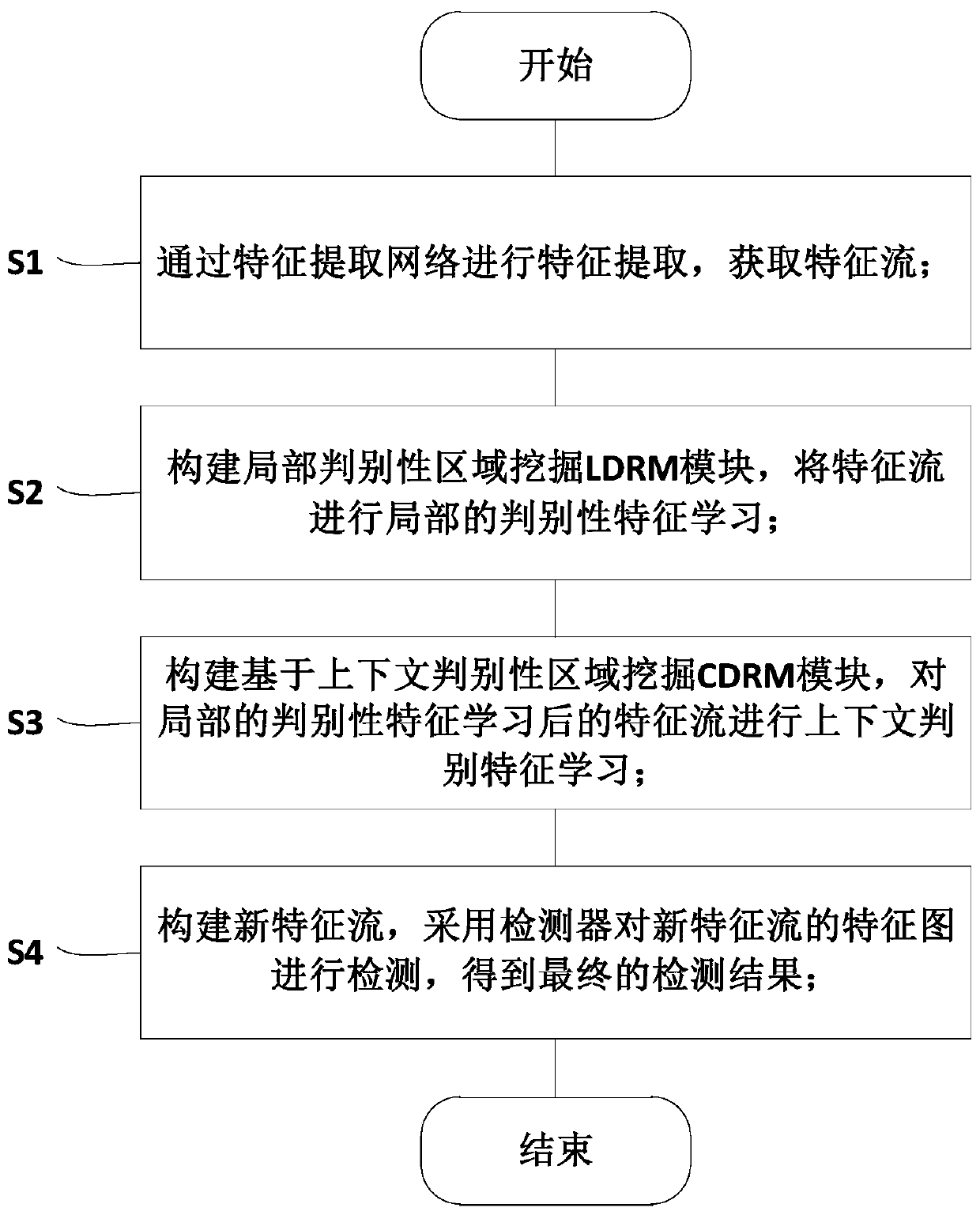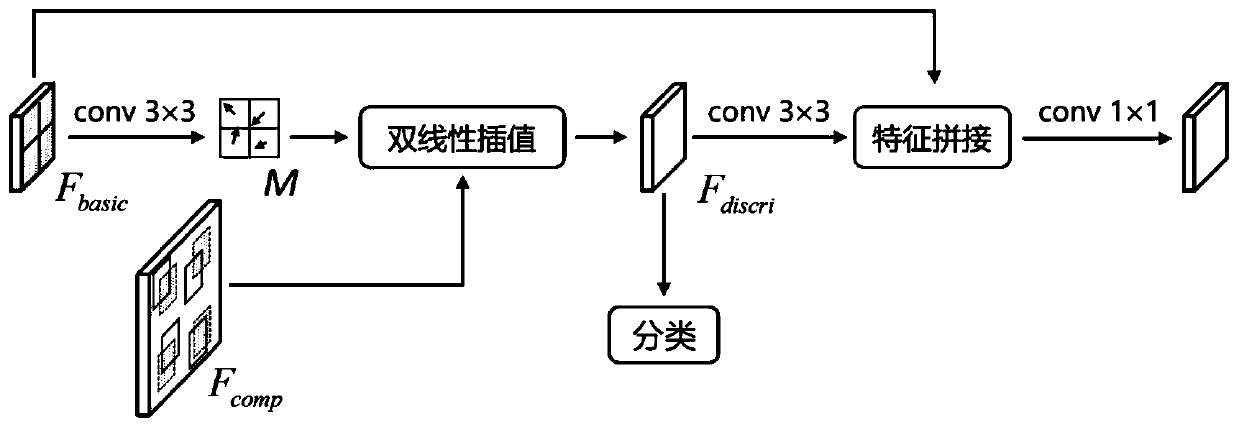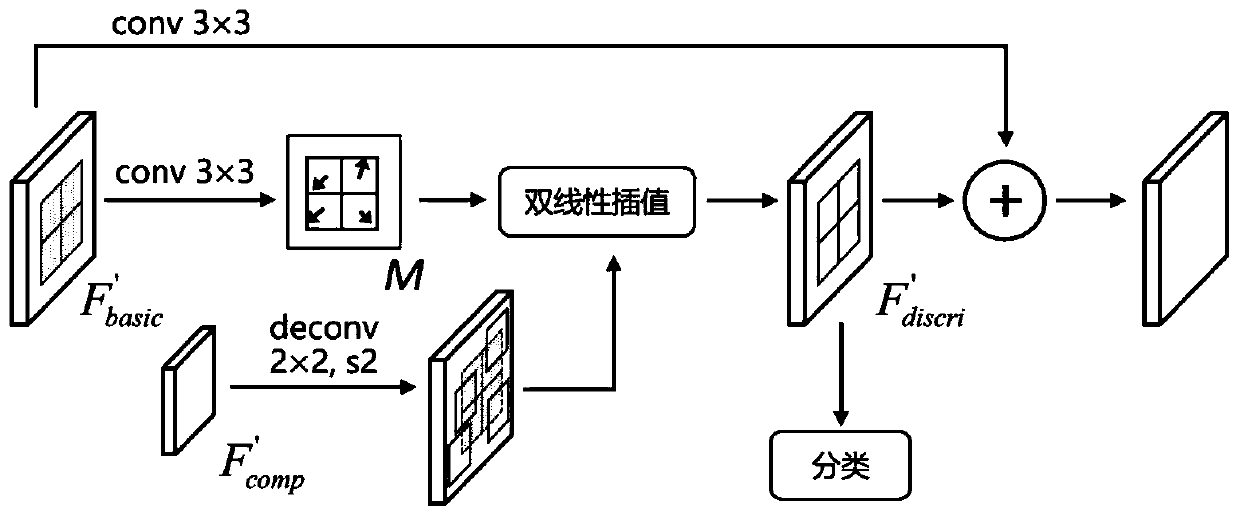A target detection method based on discriminative area mining
A target detection and discriminative technology, applied in the field of computer vision, which can solve the problems of detector foreground target and background area interference, etc.
- Summary
- Abstract
- Description
- Claims
- Application Information
AI Technical Summary
Problems solved by technology
Method used
Image
Examples
Embodiment 1
[0062] Such as figure 1 As shown, an object detection method based on discriminative region mining includes the following steps:
[0063] S1: Perform feature extraction through the feature extraction network to obtain the feature stream s 1 , s 2 ;
[0064] S2: Construct a local discriminative region mining LDRM module, the feature stream s 1 , s 2 Perform local discriminative feature learning;
[0065] S3: Construct a context-based discriminative region mining CDRM module, and learn the feature stream s after local discriminative features 1 , s 2 Carry out context discriminant feature learning;
[0066] S4: Construct feature stream s 3 , using the detector to pair the feature stream s 3 The feature map is detected and the final detection result is obtained.
[0067] More specifically, such as figure 2 As shown, the step S1 includes the following steps:
[0068] S11: Input an image with an input size of 300×300 and its ×2 upsampled image into the same feature extr...
Embodiment 2
[0109] More specifically, on the basis of Example 1, in order to reflect the technical effect of the present invention, experiments were carried out on two data sets of PASCAL VOC 2007 [9] and MS COCO [10], and compared with other advanced target detection methods .
[0110] In the specific implementation process, the input image of the experiment has two resolutions, which are 300×300 and 512×512. In the experiment, ResNet-18 and ResNet-34 pre-trained by the ImageNet dataset were selected as the feature extraction network.
[0111]In the specific implementation process, this experiment is trained on the trainval datasets of PASCAL VOC 2007 and VOC 2012, and tested on the PASCAL VOC 2007test dataset, and the feature extraction network is ResNet-18. During training, the batch size is set to 16 and the number of iterations is 120k. The initial learning rate is set to 1×10 -3 , when the number of iv iterations is 80k and 100k, the learning rate is adjusted to 1×10 -4 and 1×10...
PUM
 Login to View More
Login to View More Abstract
Description
Claims
Application Information
 Login to View More
Login to View More - Generate Ideas
- Intellectual Property
- Life Sciences
- Materials
- Tech Scout
- Unparalleled Data Quality
- Higher Quality Content
- 60% Fewer Hallucinations
Browse by: Latest US Patents, China's latest patents, Technical Efficacy Thesaurus, Application Domain, Technology Topic, Popular Technical Reports.
© 2025 PatSnap. All rights reserved.Legal|Privacy policy|Modern Slavery Act Transparency Statement|Sitemap|About US| Contact US: help@patsnap.com



